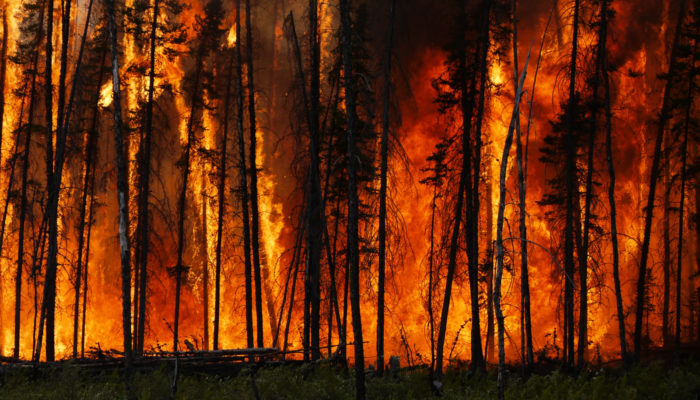
Earth is the only known planet with fire activity – everywhere else, there is not enough oxygen for this process to occur. Since fire appeared on Earth many millions of years ago, it has played a key role in the development of plant adaptation and the distribution of ecosystems. However, the natural occurrence of fire changed with the onset of human evolution. The purposeful use of fire for different aims and the changes in landscape related to livestock and cultivation, directly and indirectly, affected the number of fires ignited, speed of fire spread and burnt area. Although fire today is present in many landscapes, including the Arctic and boreal forests, its influence on biogeochemical cycles, ecosystem dynamics, and impact on society are still merely explored (Fig. 1).
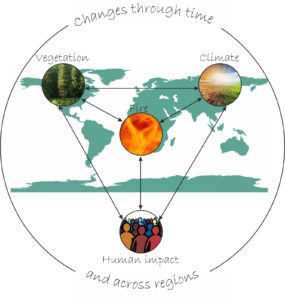
Fig. 1. A conceptual scheme of fire-vegetation-climate-human interaction
It is clear that fires will increasingly catalyse change with a direct impact on human life quality. A transdisciplinary approach with knowledge transfer and dialogue between researchers, ecosystem managers, and policymakers is needed to better understand the links between fire outbreaks and different components of the Earth system. In this blog post, we summarise an event where such an exchange found space. The Galileo Conference titled “Fire impacts at the Earth surface across space and time: perspectives for future fire management” was held under the umbrella of the EGU in Germany from March 28 to April 01, 2022. The conference gathered 42 participants from 14 countries who actively presented their work related to the conference’s objectives. Several main themes allowed for deeper exchange around palaeofire projects, studies on contemporary management, and modelling approaches (Fig. 2).
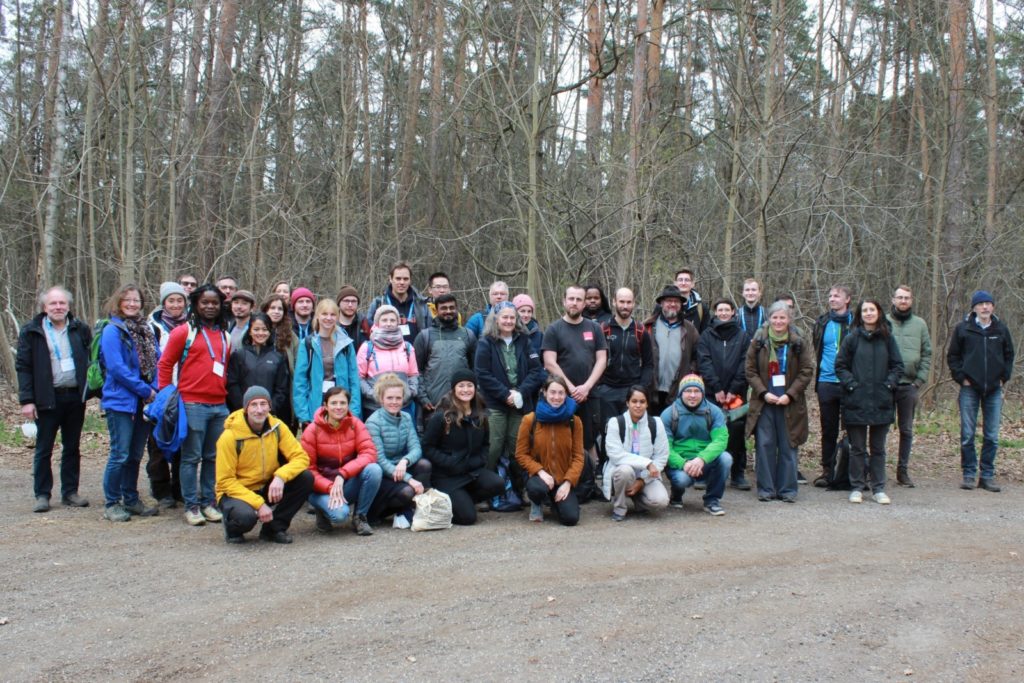
Fig. 2. EGU Galileo Conference on ‘Fire impacts at the Earth surface across space and time’, Bad Belzig, Germany (Photo Credit: Vivien Reichel, with permission)
Other sessions were focused on geographic areas of interest, such as the tropical, temperate and boreal zone. The discussion-driven structure of the conference allowed us to integrate fire-related aspects from various ecosystems across the world and develop a framework for knowledge transfer. A series of keynote speeches covered ongoing research in some of the most important fire biomes and terrestrial carbon reservoirs through time, giving a glimpse of fire activity in the past and the unknown future (Figs. 3 and 4).
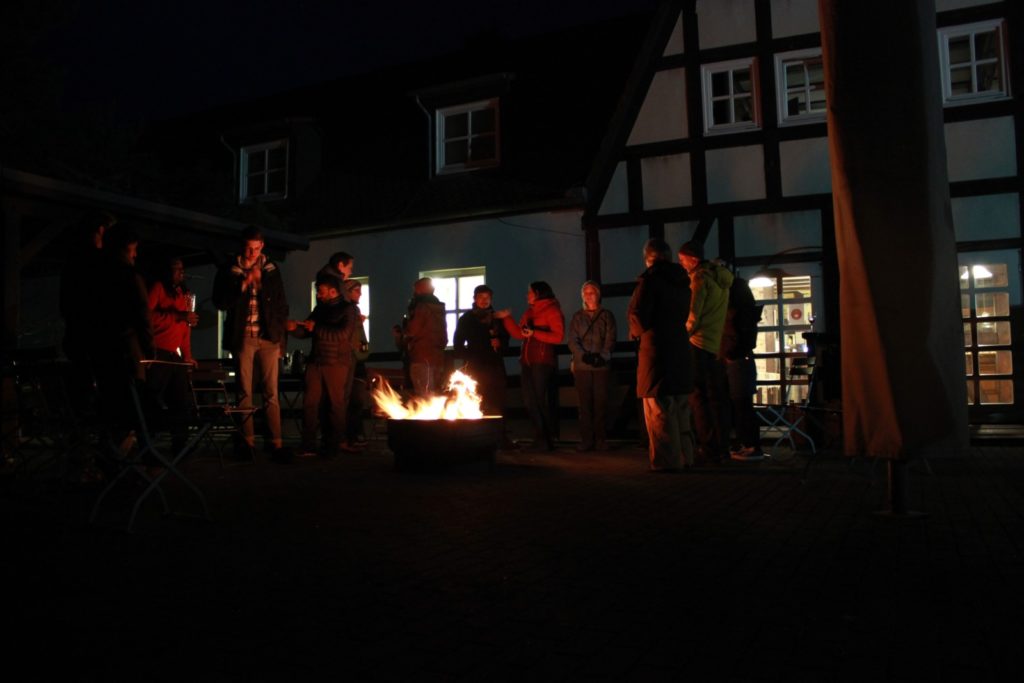
Fig. 3. A suitable setting to share fire field stories and research ideas (Photo credit: Vivien Reichel, with permission)
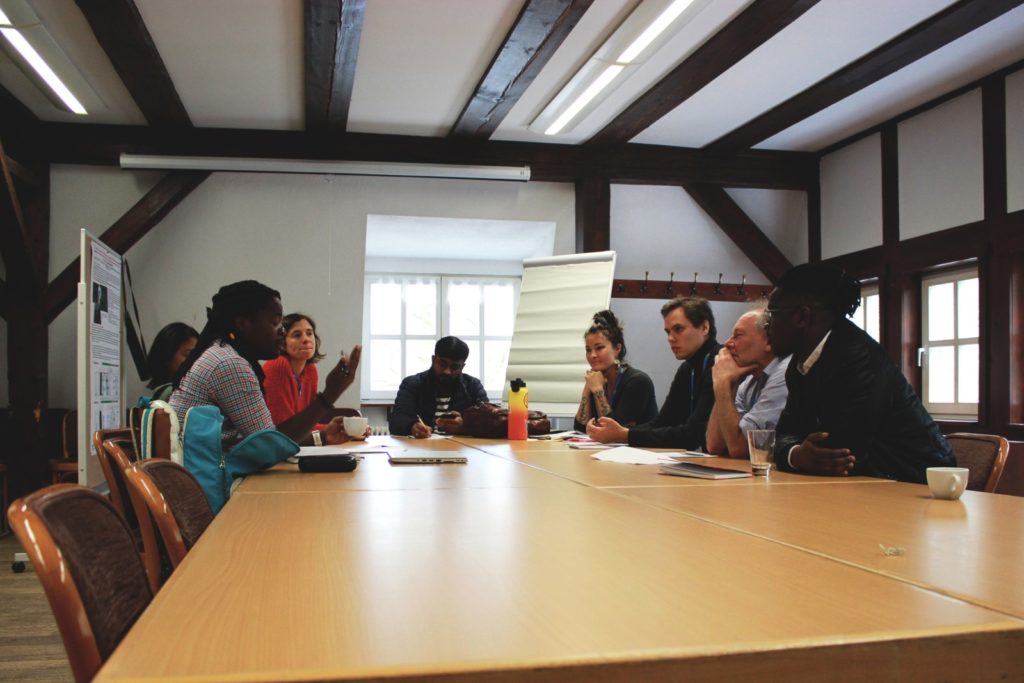
Fig. 4. Discussion-driven conference: breakout sessions (Photo credit: Vivien Reichel, with permission)
Fire disciplines across space and time
Kicking off the conference and keynote speeches, Philipp Higuera shared insights on fire activity and associated post-fire tree regeneration in the subalpine Rocky Mountains (western US). Compared to the past 2000 years of fire activity, the last seven decades are exceptional and likely associated with drier and warmer conditions in the 21st century [1]. A concerning divergence between long-term fire regimes and recent fire activity was also discussed for the Amazon forest. In her research, Yoshi Maezumi found that mega-fires of the past decade are very different from the low-severity cultural burning practised by humans in the region for thousands of years. A direct effect of fire activity on forest composition, structure, and flammability can be detected until today [2].
Tercia Styrdom also discussed the role of fire as an ecosystem driver in the case of the Kruger National Park in South Africa. Field experiments with data from almost seven decades suggest that fires do not induce soil hydrophobicity, but are associated with more compacted soils [3]. Further diving into feedback effects between fires and terrestrial ecosystems, Chantelle Burton shared insights from simulations for the upcoming decades under dynamic emission, population, and land-use change scenarios. Model-based results could help to adapt future management strategies, as summarised in the recent UN Rapid Assessment Report [4].
Positive feedback links between climate and fire activity were again at the core of research by Sander Veraverbeke on fire activity in the arctic boreal. Since the 1970s, early snowmelt and atmospheric blocking events have occurred more frequently, and are also likely associated with the record fire years in the arctic boreal in 2019, 2020, and 2021 [5]. Finally, the keynote on systems ecology by Pierre Ibisch was a reminder that stressors such as fire, weather extremes, and ecosystem fragmentation are all strongly interlinked with feedback effects. Consequently, management strategies need to be measured in terms of ecosystem functioning rather than individual components such as single plant species.
Resilience on a post-fire site in Brandenburg, Germany
A field trip to the PYROPHOB project’s study sites was organised to foster discussions on the resistance and resilience of forests and climate change impacts (Fig. 5). In 2018, a fire burned 400 hectares of forests during one of Germany’s driest seasons ever recorded. Since 2020, an interdisciplinary group has been using the site with 15 study plots east of Treuenbrietzen and north of Jüterbog as open-air laboratories.
Here, they monitor post-fire forest regeneration and renewal according to different management strategies. On some plots, the burned biomass was removed, the soil was ploughed, and young trees were planted. On others, tree seeds have been scattered. Several plots were left untouched and left for self-regeneration.
The PYROPHOB sites are great examples for studying the implementation of different strategies and offer a better appreciation for the complexity of forest ecosystems.
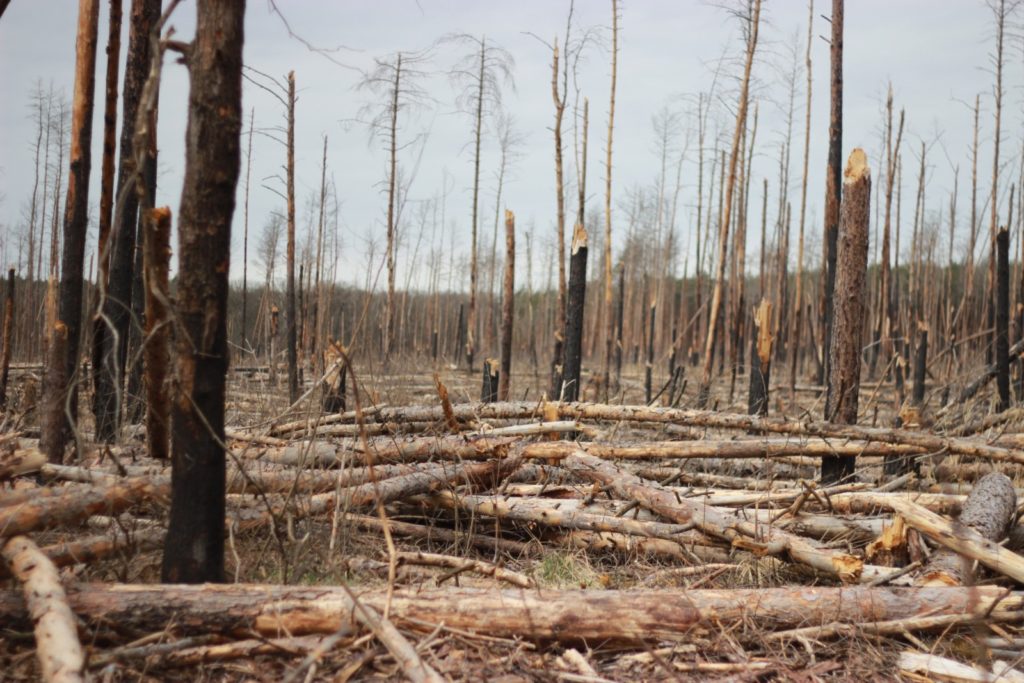
Fig. 5 Field trip to the PYROPHOB project study sites in Brandenburg, Germany (Photo credit: Vivien Reichel, with permission)
Perspectives for future fire management
The coupled human-natural system with its biogeochemical cycles, landscapes and fire regimes are strongly linked and changing. Fire has always played a crucial role in Earth’s history, in human evolution and in society, sometimes associated with benefits but causing severe damage and escalating management costs. Research can not tell the right way forward, but it can inform about the range of possibilities that are expected to come. Keynote speakers and breakout sessions crystallised that much work remains to be done on the landscape, the narratives we use, and the research methods we deploy. Whatever decision is made to manage fire regimes today, be it to prevent a fire, to let it burn under certain conditions, or to wait a bit and do nothing, it will have consequences and feedback links for the climate system, the soils, the ecosystem and society. Crucially, an ongoing dialogue between researchers, landscape managers and practitioners, the economic system and the policy sphere, such as facilitated at the conference, allows researchers to identify the most urgent questions, connect different answers, and provide a base to decide on future fire management (Fig. 6).
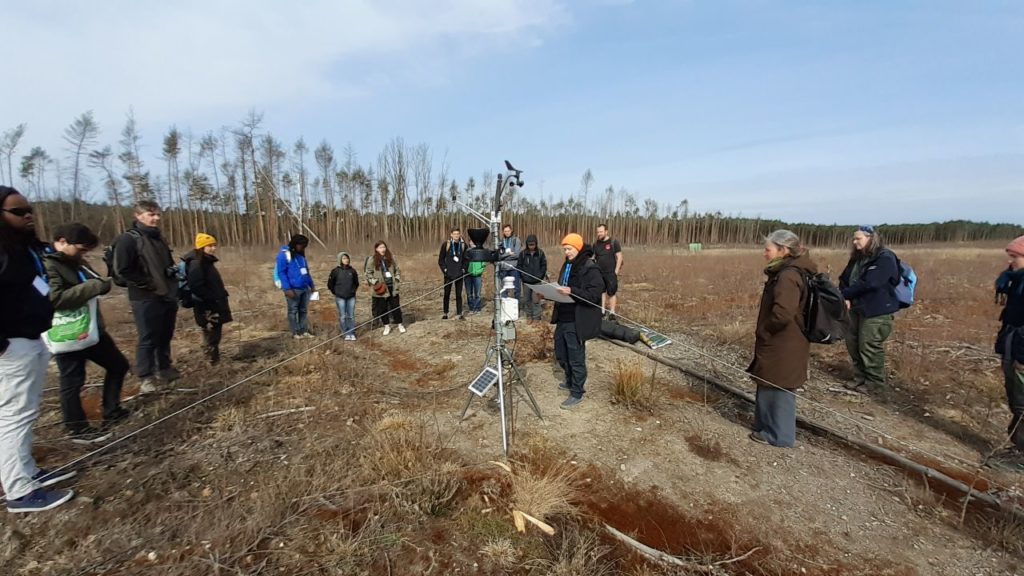
Fig. 6 Researchers follow up on different post-fire management strategies (Photo credit: Judith Kirschner, with permission)
Present, discuss, and collaborate
Undoubtedly, conferences are crucial for developing networks, transferring knowledge, and finding new ways and directions of research. Still, they also provide opportunities for looking at challenges from different angles. The conference gathered scientists at different career stages and from various cultural backgrounds. The diversity of the presented views was an eye-opener to challenges related to fire science and management, especially in remote parts of the world.
The only thing we found in need of more attention at future conferences was the time for a longer poster session. Pitching research ideas through poster sessions is often overlooked or speeded up, while it gives a great opportunity to talk with the author, favours networking and opens opportunities for collaboration. Poster sessions provide a friendly atmosphere and are especially valuable for everyone who feels socially awkward or is not comfortable with walking up to complete strangers and sharing their views. More poster sessions, please!
Acknowledgements
Conference organisation team: Elisabeth Dietze, Lennart Grimm, Boris Vannière, Igor Drobyshev, Cathelijne Stoof, Daniele Colombaroli, Ramesh Glückler, Vivien Reichel, Michał Słowiński, Jeanette Blumröder
The PYROPHOB team is thanked for sharing knowledge and experience. Last but not least, we want to thank all conference participants for sharing their research and views and for the friendly atmosphere!
References
[1] Higuera, P.E., Shuman, B.N. and Wolf, K.D., 2021. Rocky Mountain subalpine forests now burning more than any time in recent millennia. Proceedings of the National Academy of Sciences, 118(25). https://doi.org/10.1073/pnas.2103135118
[2] Maezumi, S.Y., Elliott, S., Robinson, M., Betancourt, C.J., Gregorio de Souza, J., Alves, D., Grosvenor, M., Hilbert, L., Urrego, D.H., Gosling, W.D. and Iriarte, J., 2022. Legacies of Indigenous land use and cultural burning in the Bolivian Amazon rainforest ecotone. Philosophical Transactions of the Royal Society B, 377(1849), p.20200499. https://doi.org/10.1098/rstb.2020.0499
[3] Strydom, T., Riddell, E.S., Rowe, T., Govender, N., Lorentz, S.A., le Roux, P.A. and Wigley-Coetsee, C., 2019. The effect of experimental fires on soil hydrology and nutrients in an African savanna. Geoderma, 345, pp.114-122. https://doi.org/10.1016/j.geoderma.2019.03.027
[4] United Nations Environment Programme (2022). Spreading like Wildfire – The Rising Threat of Extraordinary Landscape Fires. A UNEP Rapid Response Assessment. Nairobi.
[5] Veraverbeke, S., Delcourt, C.J., Kukavskaya, E., Mack, M., Walker, X., Hessilt, T., Rogers, B. and Scholten, R.C., 2021. Direct and longer-term carbon emissions from arctic-boreal fires: a short review of recent advances. Current Opinion in Environmental Science & Health, 23, p.100277. https://doi.org/10.1016/j.coesh.2021.100277
Post edited by Joana Parente, Valeria Cigala and Gabriele Amato
